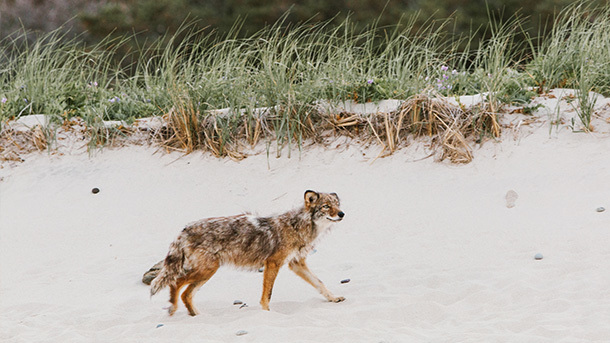Predator Coexistence - United States
Coexistence is a better existence for allchanging the conversation: from conflict to coexistence
changing the conversation: from conflict to coexistence

Every day, thousands of wild animals are killed deliberately by our government. In 2017, at least 1.3 million native wild animals were killed by one US government agency in order to “control” them.
A huge range of native wildlife including beavers, coyotes, wolves, foxes, black bears, bobcats, river otters, and others are killed daily, often with cruel traps or inhumane poisons. This doesn’t include the hundreds of domestic animals killed unintentionally in the process (including dogs like Kasey).
What is the point of all this carnage? The government claims it kills these animals to reduce conflict. Should our answer to living with wildlife in human-dominated areas be wholesale slaughter that is not only cruel, but ineffective and expensive? Where did we get the idea that native wildlife doesn’t belong in and around our towns, cities, and farms? Why is our answer to any contact between people and our wildlife neighbors so often killing the native wildlife?
Media stories often depict wildlife interactions as a conflict. Wolves are portrayed as massacring sheep or cattle when in fact, wolves prey on a tiny fraction of livestock and ranchers are compensated for losses. Coyotes are presented as prowling the cul de sacs of suburban America looking for unsuspecting children. The truth is coyote attacks on humans are exceedingly rare.
The message we get from these stories is clear: wildlife doesn’t belong in and around our communities. When we get this message, the response is to attempt to remove these animals by whatever means necessary. The result is that over a million wild animals are being killed each year and millions of tax dollars being spent on killing them.
For most species, these barbaric tactics don’t actually work. For instance, research has shown time and again that attempts to suppress coyote populations only disrupt their natural reproductive self-regulation, such that populations rebound and even grow in response to culls.
Reframing the Relationship
We need to reframe our relationship with wildlife in this country and change the conversation from conflict to coexistence.
Coexistence means making simple changes in order to avoid conflicts in the first place and finding non-lethal solutions where needed. It means no more expensive, inhumane, and ineffective culls. Coexistence means targeted removal only as a last resort.
Yes, living in the same space as wildlife can lead to some complications, but it should be celebrated that some native species have been able to carve out habitat from human-dominated landscapes. People have not only the responsibility, but also the tools, to find smart solutions that sustain positive relationships with our native species.
For example, by simply securing garbage and avoiding leaving out food that could attract wildlife, we can help ensure that coyotes will continue to avoid people. Or, instead of trapping and killing beavers for their natural behavior of making dams, we can install culverts that allow water to flow and prevent flooding. There are thousands of examples of people finding ways to coexist, and even thrive alongside native wildlife. We just need to inform ourselves of the best ways to live in harmony with our wild neighbors.
We Need Wildlife
Coexistence is not only imperative for wildlife, it’s critical for people too. Wild animals in many places are the primary draw for the outdoor recreation industry. It’s estimated that wildlife watching contributes $80 billion to the US economy every year in equipment sales, lodging, and transportation, mostly benefitting local communities. In fact, the US Fish and Wildlife Service (FWS) estimated that bird watching alone led to the creation of 666,000 jobs in 2011.
Healthy wildlife populations also support balanced ecosystems that allow for the things that make our way of life possible, including clean water, clean air, pollination, flood mitigation, and erosion control.
And don’t forget that many people, like us, simply enjoy knowing that native wildlife species are around us. Just take one look at the bald eagle nest cam in my city (Washington, DC). I check up on Liberty and Justice every week!
Despite the wholesale changes to the environment that humans have made, it’s a miracle that native wildlife can still flourish alongside our asphalt streets and concrete buildings. At IFAW, we believe it’s something to be treasured that many native wildlife species are resilient and clever enough to not only survive but also flourish in urbanized landscapes. Let’s find ways to coexist with our native wildlife and make America a better place for people, animals, and ecosystems.
-- Mark Hofberg, IFAW Assistant Campaigns Officer
Related content
Our work can’t get done without you. Please give what you can to help animals thrive.